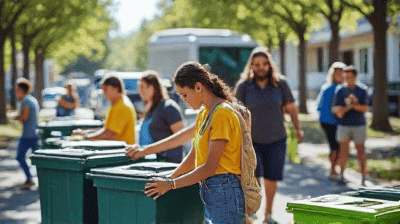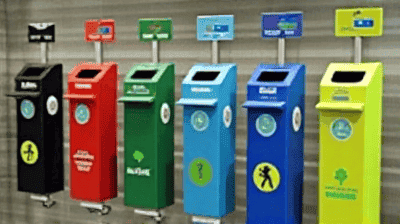
Recycling has become a cornerstone of sustainable waste management practices, essential for reducing landfill waste, conserving natural resources, and mitigating environmental harm. While government initiatives and large-scale recycling facilities play crucial roles, community-based recycling programs have emerged as powerful agents of change, effectively addressing local waste management challenges. These grassroots programs galvanize community involvement, raise awareness about waste issues, and foster a culture of sustainability.
Community-based recycling refers to local efforts to collect, process, and manage recyclable materials through the participation of residents, businesses, and organizations. Unlike larger municipal programs that may be top-down or standardized, community-based efforts are typically tailored to the unique needs and characteristics of a specific locality. These programs often emphasize education, engagement, and local decision-making, fostering a sense of ownership and responsibility toward waste management within the community.
Successful recycling programs rely heavily on community involvement for several reasons:
Local Relevance: Community-based initiatives can adapt to the specific waste management needs of their locality, taking into account the types of materials generated, the socio-economic environment, and the existing infrastructure.
Awareness and Education: Communities often lack awareness about the benefits of recycling and proper waste management practices. Educational initiatives are critical in informing residents about how recycling works, its environmental benefits, and how they can participate effectively.
Behavioral Change: Grassroots programs can influence behavior by fostering a culture of recycling and sustainability. When individuals feel a personal connection to their community efforts, they are more likely to engage in eco-friendly practices.
Empowerment and Ownership: Community-based programs highlight the importance of local solutions. By empowering residents to take an active role in recycling initiatives, communities cultivate a sense of ownership and responsibility that can lead to long-term commitment and success.

One notable example of a community-based recycling program is the Zero Waste Initiative, which emerged in various cities around the world. The goal of this initiative is to minimize the amount of waste sent to landfills through comprehensive recycling and composting strategies.
Cities implementing Zero Waste strategies have seen substantial reductions in landfill waste, with many aiming for zero waste by specific target years. These initiatives have also fostered a cultural shift towards environmental responsibility and sustainability.
In many places, neighborhood-focused recycling challenges have been organized to encourage friendly competition among communities. This approach promotes recycling by leveraging social incentives and collective effort.
The Neighborhood Recycling Challenge has demonstrated significant increases in participation rates and recycling tonnage. Residents often develop camaraderie and pride in their neighborhood’s accomplishments, leading to sustained engagement even after competitions conclude.
Urban reuse centers are community-driven programs focused on reducing waste through the repurposing of materials that would otherwise be discarded. These centers serve as hubs for donations, exchanges, and educational activities centered around reusing, repairing, and recycling.
Urban reuse centers significantly reduce the volume of waste sent to landfills while promoting a culture of creativity and sustainability. Communities benefit from accessible resources while reducing the need for new purchases, thereby conserving valuable resources.
Schools play a pivotal role in shaping the values and behaviors of the next generation, making educational institutions ideal starting points for community-based recycling initiatives.
School-based recycling programs not only reduce waste on campus but also instill a sense of environmental stewardship in students. These programs can have far-reaching effects as students carry their values and practices into their homes and communities.
Community swap days are events that encourage residents to exchange items they no longer need instead of throwing them away. These initiatives promote reusing and recycling while fostering community connections.
Community swap days reduce waste while promoting a culture of sharing and cooperation. Participants often leave with new items they need while preventing goods from ending up in landfills.
While community-based recycling programs have proven to be effective, they also face challenges that can hinder their success:
Many grassroots recycling initiatives rely on limited funds and volunteer efforts. Securing consistent financial support can be difficult. Community organizations should explore opportunities for grants, partnerships with local businesses, and sponsorships to sustain their programs.
Residents may have limited knowledge of recycling practices or may not prioritize recycling. Continuous education and outreach efforts are necessary to engage residents effectively and address any misconceptions about recycling.
Community-based programs may struggle with low participation rates, particularly in neighborhoods with less engagement. Collaborative efforts that include local leaders, businesses, and schools can help foster a culture of participation and accountability.
The success of community recycling programs often relies on the availability of proper recycling facilities and collection systems. Communities must work with local governments to address these infrastructure gaps to ensure that materials collected can be processed efficiently.
Many community initiatives face challenges in measuring their impact and effectiveness. Implementing tracking and reporting systems can help programs evaluate progress, demonstrate results to stakeholders, and refine strategies for improvement.

Emerging technologies can play a significant role in enhancing the effectiveness of community-based recycling programs. Mobile apps that provide waste sorting information, track recycling efforts, and create community connections can engage residents and streamline recycling processes.
Establishing partnerships between local governments, nonprofits, businesses, and community organizations can strengthen recycling initiatives. Collaborative efforts may lead to increased funding, resources, and collective expertise, allowing for more impactful programs.
While recycling remains vital, future community programs might expand beyond simple recycling to encompass broader sustainability efforts, such as waste reduction campaigns, composting initiatives, and local food production. This comprehensive approach can encourage communities to adopt a more holistic view of waste management.
Integrating sustainability education into community initiatives can help raise awareness and engage residents throughout the lifecycle of products, from purchasing decisions to end-of-life management.
As communities worldwide embrace sustainability, there are opportunities for local innovators to learn from successful international programs. Adapting these ideas to local contexts can enhance community-based recycling efforts and inspire innovative solutions.
Community-based recycling programs have the potential to transform waste management at the local level, creating significant environmental, social, and economic benefits. By empowering communities to take control of their waste management practices, these grassroots initiatives foster a sense of responsibility and collaboration among residents.
The success of these programs relies on continuous education, engagement, and innovation, while overcoming challenges through collaboration and resource management. As communities work together to develop sustainable waste management solutions, they contribute to a more resilient planet and a better future for generations to come.